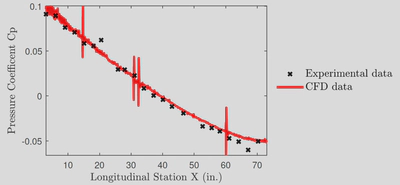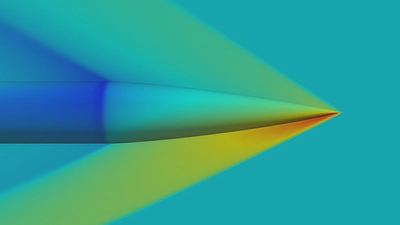
Abstract: Developed and validated rocket structural loading models at max-Q using Python and OpenFOAM CFD simulations , executed on the Niagara supercomputer, leading to 12" reduction in propellant tank length to ensure 2x safety factor during flight
CFD Overview:
- Validated CFD approach using data from a similar NACA geometry at similar flight conditions to Defiance at max-Q
- Used hybrid mesh generator Pointwise
- Used inviscid, compressible solver in open-source CFD platform OpenFOAM
- Run in parallel using 320 to 480 processors on Canada’s fastest supercomputer, Niagara



